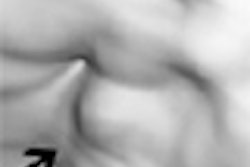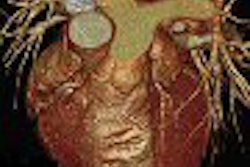SAN DIEGO - The ordering of unnecessary CT scans continues to be a problem in at least one hospital in the southern U.S., despite numerous warnings about the modality's overuse, according to a presentation Monday at the American Neurological Association meeting.
In 2002, the National Cancer Institute (NCI), concerned about the effects of CT radiation on young patients, urged U.S. doctors to be more discriminating in how those tests are used. Five years earlier, practice parameters for head CT scans in children with recurrent seizures had been published.
Dr. Leslie Allen, a resident in pediatrics at the Joan C. Edwards School of Medicine at Marshall University in Huntington, WV, decided to see how well the emergency department (ER) was following the guidelines when assessing epileptic children who presented with acute seizure activity. She said she found the results disheartening.
"There was a significant increase in the number of emergent CT scans performed after the release of the NCI statement in 2002," Allen said. "As physicians we should make judicious use of CT scans a priority."
She reported that two years before NCI guidelines were released and distributed at her facility 61 children were brought into the ER with seizures, five of whom underwent head CT scans. However, only two of those five actually met the NCI criteria for a CT scan. Two years later, 66 children were brought into the ER with seizures and 16 underwent CT scans. Only four of the 16 should have been scanned under NCI criteria. "All these tests were ordered by the emergency department. I talked to radiologists at the hospital, and they said they have told the ER not to do those tests," Allen said.
In the total study period from 2000-2004, 127 cases were reviewed revealing 21 head CT. All but two of the scans were either normal, showed no change from previous scans, or revealed sinusitis. Of the other two scans, one finding seen on CT was not found on MRI. Most importantly, none of the findings on CT made any difference in how the patients were managed, Allen pointed out, adding that the increase in CT scans was statistically significant (p < 0.05). The next phase of research will be interviews with ER doctors to find out more details on increased CT use, Allen said.
Meanwhile, other physicians at the meeting offered their opinions on why CT was being overutilized.
"We think they are doing it because of malpractice concerns," said co-author Dr. Charlotte Jones, an assistant professor of pediatrics at Marshall University. "They may also be under pressure of parents to 'do something' for their children." Jones suggested that interventions to reduce CT overuse, and subsequently lower radiation exposure, should be aimed at ER doctors as well as at parents.
"To me, it is agonizing that so much of the resources of the hospitals are spent for unnecessary imaging studies," commented Dr. William Sheremata, a professor of neurology at the University of Miami in Florida.
Dr. Armand Sabet, an assistant professor of neurology at the University of Kentucky in Lexington, noted that he practices in the same geographical area as the Marshall study.
"I believe these results," Sabet said. "I would not be surprised to see the same thing at my hospital."
By Edward SusmanAuntMinnie.com contributing writer
September 27, 2005
Related Reading
Chiropractic imaging under Medicare attracts attention, August 23, 2005
Study finds MRI is overused in sports medicine, February 24, 2005
Overexposed? CT in the emergency room, October 21, 2004
Use of pediatric head CT growing steadily in emergency departments, May 4, 2004
Medicare database shows cardiologists driving up imaging costs, January 9, 2004
Copyright © 2005 AuntMinnie.com




















